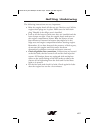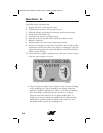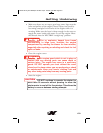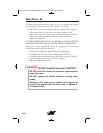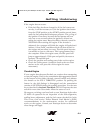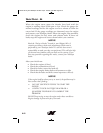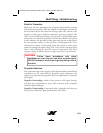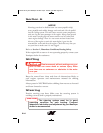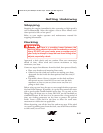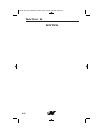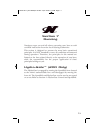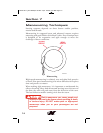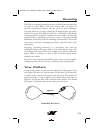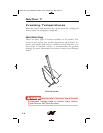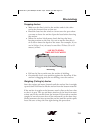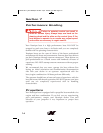
6-15
Getting Underway
Stopping
Stopping the engine immediately after operating at high speed is
not recommended. Allow the engine a two to three minute cool-
down period at idle or low speed.
Refer to your engine operator and maintenance manual for
stopping information.
Docking
Approach a dock slowly and use caution. Plan your maneuvers
ahead of time. Allow wind and current movement to help
maneuver your boat.
Come to a stop a short distance from the dock, then proceed slowly.
• Have your fenders and mooring lines ready.
• Observe how the wind and current are moving your boat.
Approach the dock with the boat pointed into the wind, if
possible.
• If possible, throw a line to a person on the dock and have
that person secure a bow line. If no one is on the dock,
maneuver as close as you can, then secure any line to a
piling or dock cleat.
Before tying up your boat, be sure to use enough fenders to protect
the boat from damage. If possible, tie up the bow toward the waves
with a good quality double-braided nylon line. Tie up only to the
lifting rings, tie down eyes or cleats; DO NOT use the handrails or
windshield frame. If the boat is to be moored for a long period of
time, use chafing protectors on the lines to protect the gelcoat
finish. Leave a little slack in the lines to allow for some wave
movement or tidal action as applicable.
When departing, cast off the bow line and move away. If the wind
or current is pushing away from the dock, cast off all lines and allow
to drift until you are clear.
There is a crushing hazard between the
boat and other objects that could cause death or serious
injury. DO NOT use your hands, arms or another part of
your body to attempt to keep the boat from hitting other
objects, especially a dock.
!
D-Drive Sec 6_2010:Nautique Ski Sec 6.qxd 7/23/09 4:46 PM Page 6-15



